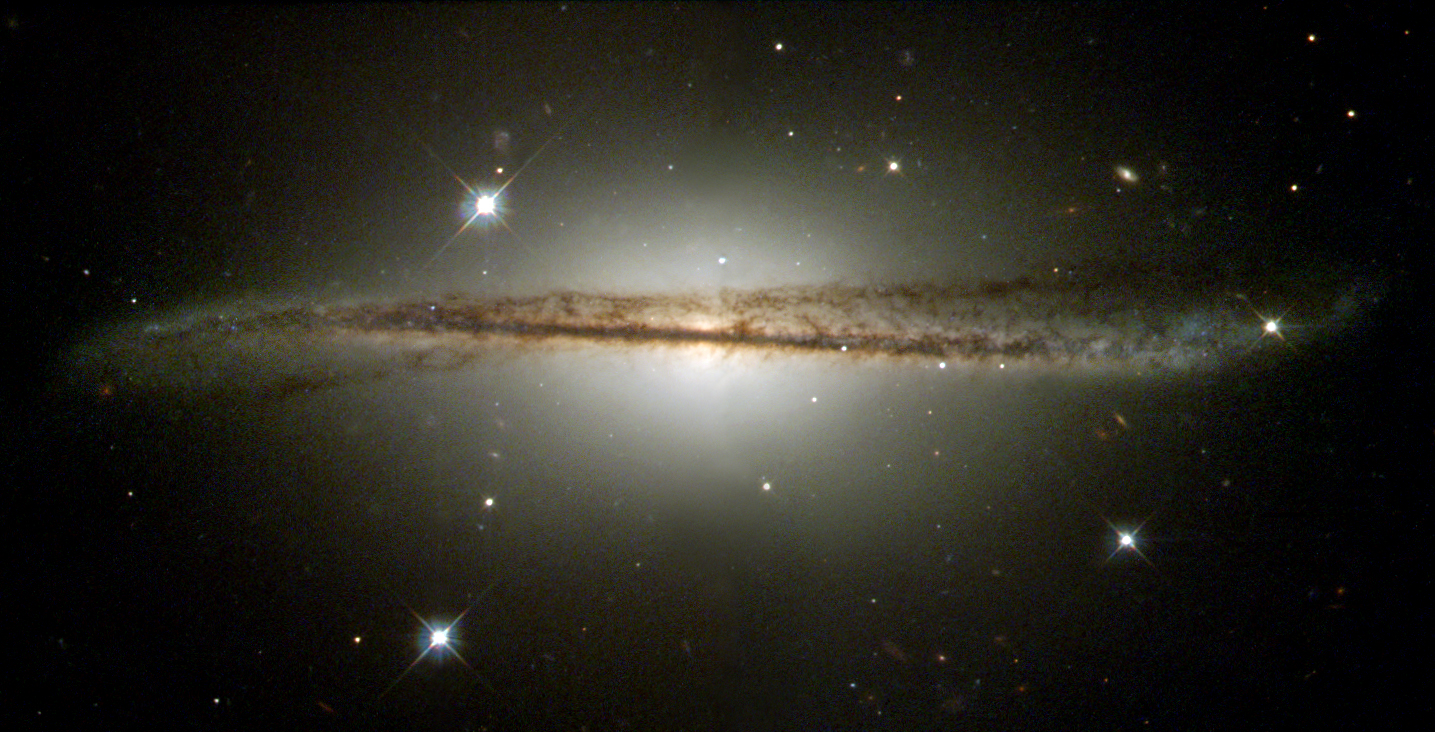Monday Bites: Twisted
Monday Bites: Twisted
 |
| Credit: NASA/Hubble |
Within the bounds of the observable universe, as far as the telescopes can see, spiral galaxies make up about 60 - 70% of all galaxies, including our Milky Way. Although spiral galaxies can be arranged among themselves into several subclasses, mainly based on their shape, for the most part, a spiral galaxy means a flat rotating disc of billions upon billions of stars, molecular gas, and interstellar dust, spreading outwards in multiple spiral arms (two and more) from a central cluster of rather old stars called the bulge. Seen face-on, a spiral galaxy reflects perfect harmony. And, edge-on, the dusty spiral arms appear as a flat band cutting across the central bulge.
In the southern constellation of Hydra, roughly 150 million light-years from Earth, lies a spiral with a literal twist. Cataloged ESO 510-G13, this unusual spiral was first spotted by the European Southern Observatory's telescopes in Chile. This image was obtained by the Hubble Space Telescope in April 2001, separately across red, green, and blue wavelength filters, and then combined.
The exact reason(s) for its twisted shape is unknown. Along the outer edges, new stars are being born at the very moment. Looking at the star formation rate, astronomers speculate that in the (astronomically) recent past, the ESO 510-G13 must've collided with another galaxy and is in the process of merging into a single galaxy that will last for millions of years.


Comments
Post a Comment